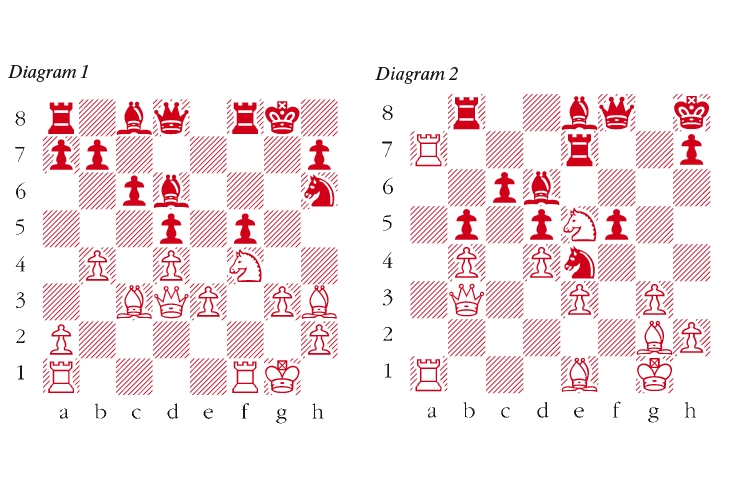Genna Sosonko is a writer and grandmaster who straddles two great chess cultures, Holland and the USSR, his chosen and native lands. His latest book, The Rise and Fall of David Bronstein (Elk and Ruby Publishing House), does not contain any actual chess analysis but instead focuses on Bronstein’s decade-long obsession with his narrow failure to become world champion in his 1951 match with Botvinnik. Bronstein was one of the most creative players in the history of the game, yet his inability to unseat Botvinnik gnawed at his soul and acted as a block on any future attempt to seize the supreme title, or even to win a major tournament.
A good counterpart to Sosonko’s book is Bronstein Move by Move (Everyman Chess), by the reliable Steve Giddins, upon which the notes to this week’s game are based.
Bronstein-Botvinnik: World Championship Moscow (Game 22) 1951; Dutch Defence
1 d4 e6 2 c4 f5 3 g3 Nf6 4 Bg2 Be7 5 Nc3 0-0 6 e3 d5 7 Nge2 c6 8 b3 Ne4 9 0-0 Nd7 10 Bb2 Ndf6 A typical Stonewall. White has a slight advantage thanks to the weakness of e5, but Black is very solid. 11 Qd3 g5 This is not quite the attacking gesture it looks. Black has a more subtle, positional idea in mind — he wants to play … g4, so as to secure control of the e4-square and stop White organising f3 and e4. 12 cxd5 exd5 13 f3 Nxc3 14 Bxc3 g4 15 fxg4 Nxg4 16 Bh3 Nh6 17 Nf4 Bd6 18 b4 (see diagram 1) White aims to play a minority attack with b5 and create a weakness in the black queenside. 18 … a6 19 a4 Qe7 20 Rab1 b5 This is one of the standard ways of meeting the minority attack. For this to work, he needs to be able to prevent White from playing e4. 21 Bg2 Ng4 22 Bd2 Nf6 23 Rb2 Bd7 Bronstein criticised this as allowing White a favourable regrouping, and instead recommended 23 … Ne4. 24 Ra1 Ne4 25 Be1 Rfe8 26 Qb3 Kh8 27 Rba2 Qf8 28 Nd3 The knight moves away, putting paid to any thoughts of … Bxf4, and also defends the b4-pawn while taking aim at c5 and e5. Now a possible Ne5 must always be reckoned with, hoping to open up the long diagonal, if Black should capture twice on e5. 28 … Rab8 29 axb5 axb5 30 Ra7 Re7 31 Ne5 Things are now really starting to come together for White. His knight irrupts into the enemy position, exploiting the classic Stonewall weakness on e5, and Black’s game is now extremely hard to defend. 31 … Be8 (see diagram 2) 32 g4 A lovely positional blow. With White’s pieces mainly infiltrating down the queenside, Bronstein suddenly opens a second front on the other wing. 32 … fxg4 With time-trouble adding to his other woes, Botvinnik collapses. Black is still hanging on after the cold-blooded 32 … Bxe5 33 dxe5 Rg7 34 Rxg7 Qxg7 35 gxf5 Qxe5 36 Ra7 Kg8. 33 Bxe4 dxe4 34 Bh4 Rxe5 35 dxe5 Bxe5 36 Rf1 Qg8 37 Bg3 Fatally luring the bishop off the long diagonal. 37 … Bg7 38 Qxg8+ Black resigns
Raymond Keene
Study in obsession

issue 16 September 2017




Comments